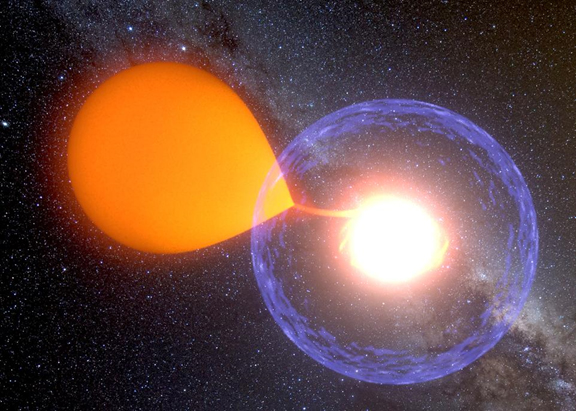The Mysterious Star
Observations obtained by an international team of astronomers, including Laurent Drissen, Thomas Martin and Alexandre Alarie from Université Laval and members of the CRAQ, could explain the sudden appearance of a “guest star”, observed more than three centuries ago.
In 1645, Korean astronomers reported the appearance of a bright new star in the constellation of Cancer. As the weeks went on, the brightness of the star gradually subsided, eventually disappearing from the sky. The identity and nature of this star remained a mystery until very recently.
Thanks to the SITELLE instrument installed at the Canada-France-Hawaii Telescope, Laurent Drissen and his collaborators established a link between the enigmatic star that suddenly appeared in the 17th century and the thermonuclear eruption of the dwarf nova AT Cancri. This research was published in a recent issue of the Monthly Notices of the Royal Astronomical Society.
The paper on AT Cancri is co-authored by Michael Shara of the American Museum of Natural History and Richard Stephenson of the University of Durham in the United Kingdom. This is the second scientific article published from data collected by SITELLE. Since its commissioning in January 2016, this imaging spectrometer has been used in 12 different research projects.
URL of the paper in Monthly Notices of the Royal Astronomical Society:
https://academic.oup.com/mnras/article-lookup/doi/10.1093/mnras/stw2753
Source:
Robert Lamontagne
Media relation and public outreach
Centre de recherche en astrophysique du Québec
Phone : (514) 343-6111 x3195
lamont@astro.umontreal.ca
Image: Krzysztof Ulaczyk University of Warwick (UK)

